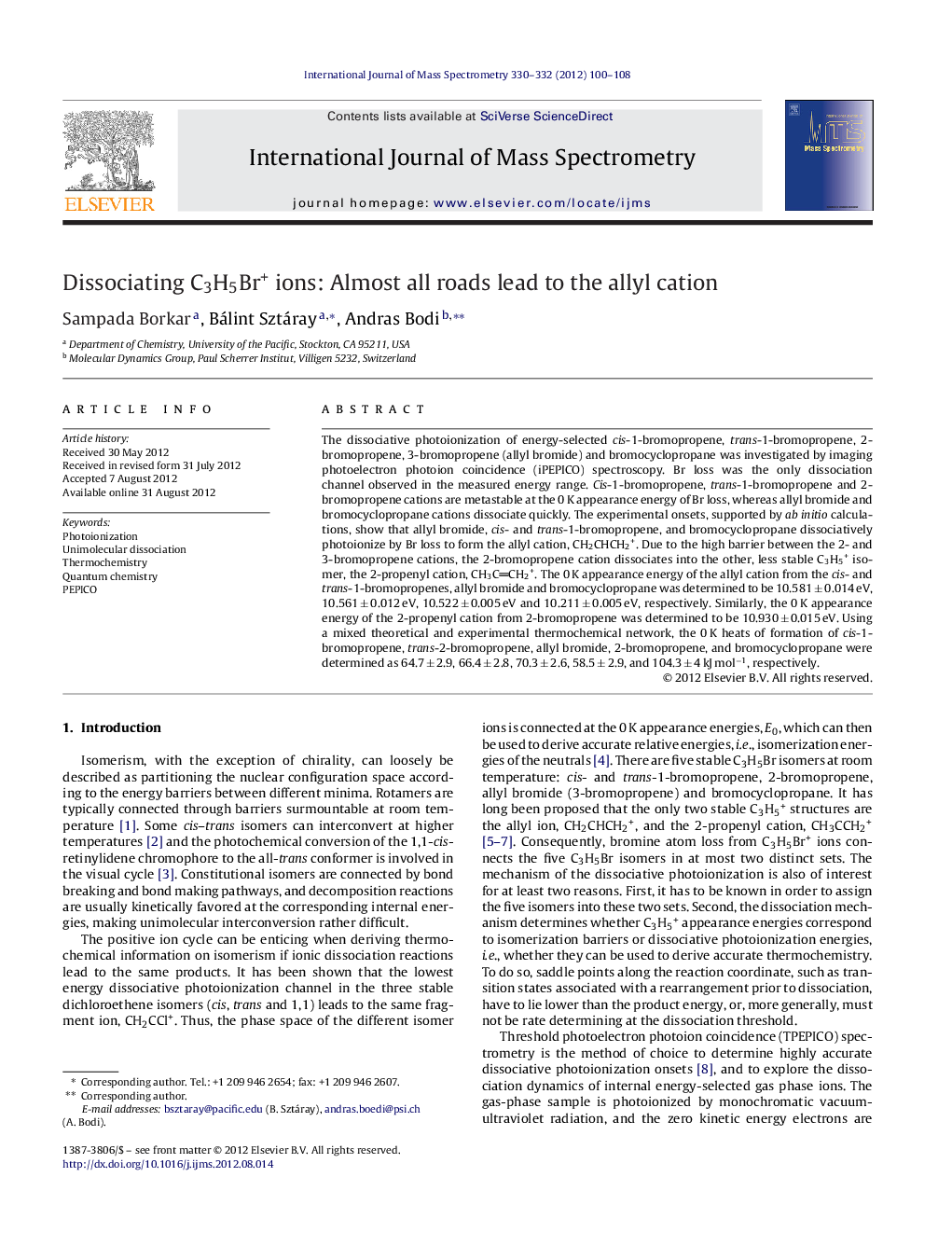| Article ID | Journal | Published Year | Pages | File Type |
|---|---|---|---|---|
| 1194234 | International Journal of Mass Spectrometry | 2012 | 9 Pages |
The dissociative photoionization of energy-selected cis-1-bromopropene, trans-1-bromopropene, 2-bromopropene, 3-bromopropene (allyl bromide) and bromocyclopropane was investigated by imaging photoelectron photoion coincidence (iPEPICO) spectroscopy. Br loss was the only dissociation channel observed in the measured energy range. Cis-1-bromopropene, trans-1-bromopropene and 2-bromopropene cations are metastable at the 0 K appearance energy of Br loss, whereas allyl bromide and bromocyclopropane cations dissociate quickly. The experimental onsets, supported by ab initio calculations, show that allyl bromide, cis- and trans-1-bromopropene, and bromocyclopropane dissociatively photoionize by Br loss to form the allyl cation, CH2CHCH2+. Due to the high barrier between the 2- and 3-bromopropene cations, the 2-bromopropene cation dissociates into the other, less stable C3H5+ isomer, the 2-propenyl cation, CH3CCH2+. The 0 K appearance energy of the allyl cation from the cis- and trans-1-bromopropenes, allyl bromide and bromocyclopropane was determined to be 10.581 ± 0.014 eV, 10.561 ± 0.012 eV, 10.522 ± 0.005 eV and 10.211 ± 0.005 eV, respectively. Similarly, the 0 K appearance energy of the 2-propenyl cation from 2-bromopropene was determined to be 10.930 ± 0.015 eV. Using a mixed theoretical and experimental thermochemical network, the 0 K heats of formation of cis-1-bromopropene, trans-2-bromopropene, allyl bromide, 2-bromopropene, and bromocyclopropane were determined as 64.7 ± 2.9, 66.4 ± 2.8, 70.3 ± 2.6, 58.5 ± 2.9, and 104.3 ± 4 kJ mol−1, respectively.
Graphical abstractFigure optionsDownload full-size imageDownload high-quality image (178 K)Download as PowerPoint slideHighlights► Bromine-loss unimolecular dissociation of internal energy selected C3H5Br+ isomer ions was studied by iPEPICO spectroscopy. ► Quantum chemical calculations were used to map out the potential energy surface connecting the various isomer cations. ► 1-Br-propenes, allyl bromide, and Br-cyclopropane form the allyl cation; 2-Br-propene dissociates to the 2-propenyl cation. ► Dissociation of the 1-bromopropene cations starts with isomerization to the allyl bromide cation prior to dissociation. ► A mixed theoretical/experimental thermochemical network was used to determine heats of formation of five C3H5Br isomers.
